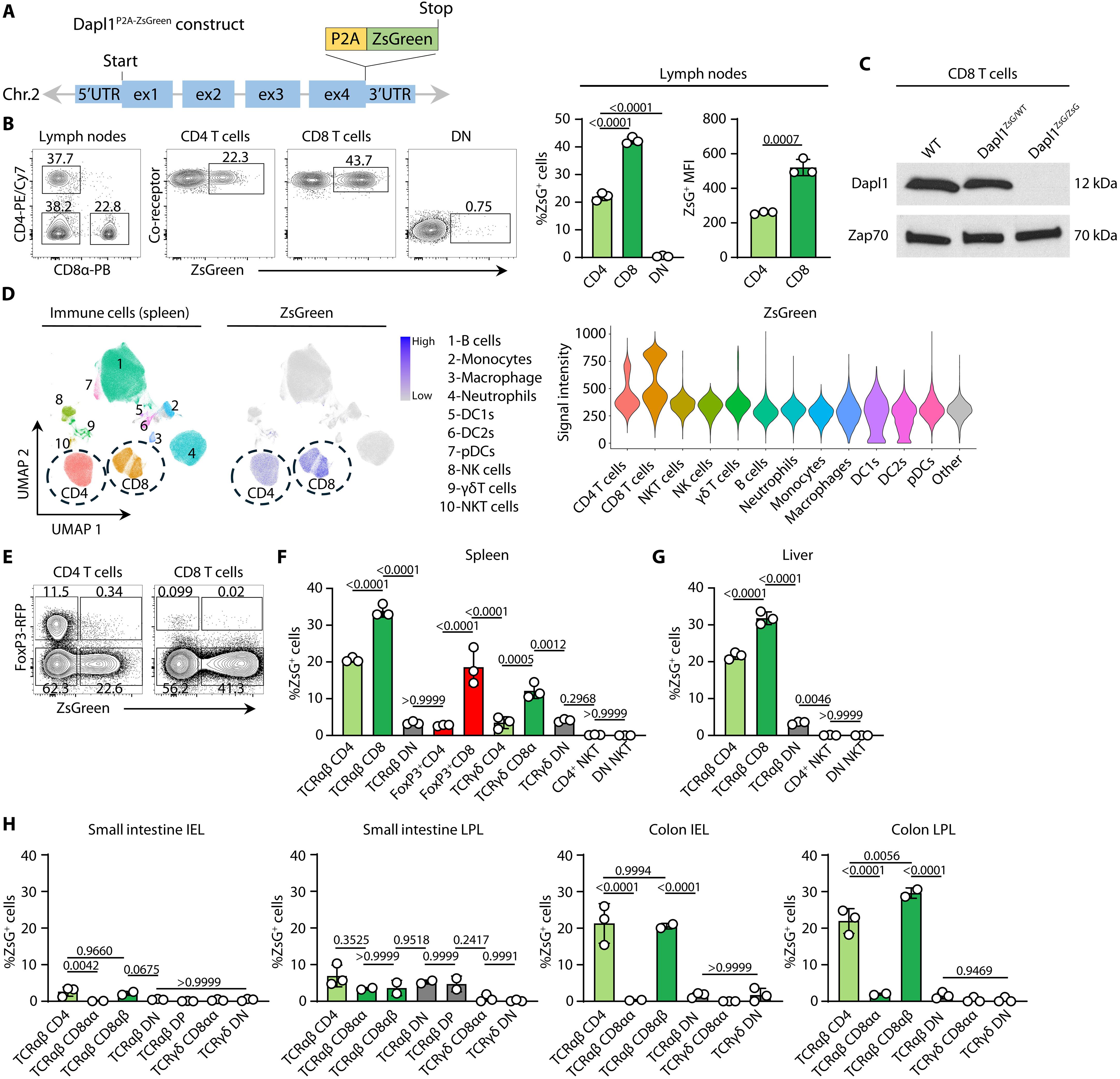dpl1 +亚群naïve CD8 T细胞富集记忆谱系前体
IF 12.5
1区 综合性期刊
Q1 MULTIDISCIPLINARY SCIENCES
引用次数: 0
摘要
记忆性CD8 T细胞提供持久的免疫,但其发育起源仍不完全确定。越来越多的证据表明,naïve T细胞池中存在功能异质性,在抗原刺激之前形成谱系潜力。在这里,我们确定了一个表达死亡相关蛋白样1 (dpl1)的naïve CD8 T细胞亚群,其中包含偏向于记忆分化的预编程前体。这些前体的分化不依赖于Dapl1,但依赖于转录因子b细胞淋巴瘤/白血病11b (Bcl11b),导致感染后产生Dapl1+中枢记忆样CD8 T细胞和癌症中的干细胞样记忆细胞。dpl1 + naïve T细胞起源于成熟胸腺细胞,并在出生后逐渐出现在外周。外周Dapl1+和Dapl1−种群表现出有限的可塑性,支持胸腺印迹模型。这些发现揭示了naïve CD8 T细胞的发育印记亚群致力于记忆命运,揭示了记忆T细胞生成的另一种途径,为治疗应用提供了新的途径。本文章由计算机程序翻译,如有差异,请以英文原文为准。

A Dapl1+ subpopulation of naïve CD8 T cells is enriched for memory-lineage precursors
Memory CD8 T cells provide long-lasting immunity, but their developmental origins remain incompletely defined. Growing evidence suggests that functional heterogeneity exists within the naïve T cell pool, shaping lineage potential before antigen stimulation. Here, we identify a subpopulation of naïve CD8 T cells expressing death-associated protein-like 1 (Dapl1) that contains preprogrammed precursors biased toward memory differentiation. The differentiation of these precursors is independent of Dapl1 but relies on the transcription factor B-cell lymphoma/leukaemia 11b (Bcl11b), resulting in the generation of Dapl1+ central memory–like CD8 T cells after infection and stem-like memory cells in cancer. Dapl1+ naïve T cells originate among mature thymocytes and gradually appear in the periphery postnatally. Peripheral Dapl1+ and Dapl1− populations show limited plasticity, supporting a thymic-imprinting model. These findings reveal a developmentally imprinted subset of naïve CD8 T cells committed to memory fate, uncovering an alternative pathway for memory T cell generation offering new avenues for therapeutic application.
求助全文
通过发布文献求助,成功后即可免费获取论文全文。
去求助
来源期刊

Science Advances
综合性期刊-综合性期刊
CiteScore
21.40
自引率
1.50%
发文量
1937
审稿时长
29 weeks
期刊介绍:
Science Advances, an open-access journal by AAAS, publishes impactful research in diverse scientific areas. It aims for fair, fast, and expert peer review, providing freely accessible research to readers. Led by distinguished scientists, the journal supports AAAS's mission by extending Science magazine's capacity to identify and promote significant advances. Evolving digital publishing technologies play a crucial role in advancing AAAS's global mission for science communication and benefitting humankind.
 求助内容:
求助内容: 应助结果提醒方式:
应助结果提醒方式:


